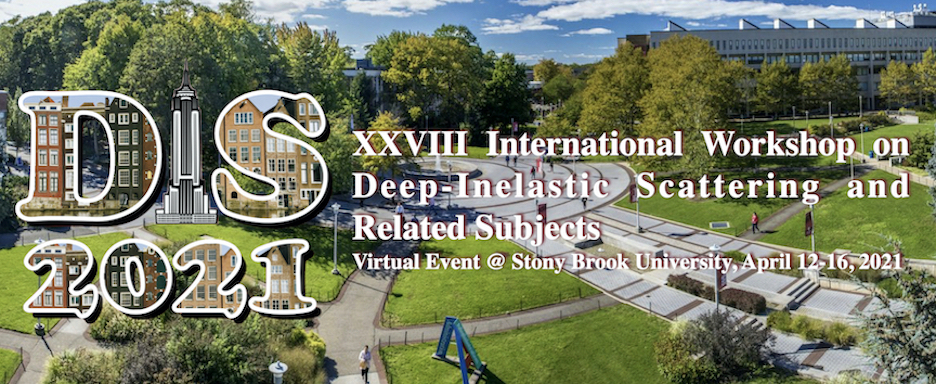Speaker
Description
Exclusive vector meson production is a powerful process to probe the gluonic structure of protons and nuclei at small Bjorken-$x$, and it also makes it possible to study the geometry of the nuclei in the transverse plane. An accurate description of the process requires us to go beyond the leading order and include corrections of higher orders. These include relativistic corrections to the meson light front wave function and higher order QCD corrections to the cross section suppressed by $\alpha_s$. Currently, exclusive vector meson production has only been calculated at leading order, and the vector meson light front wave function is not fully understood but is instead taken from phenomenological models or assumed to be fully nonrelativistic.
In this talk, we will present results from our recent work [1] on relativistic corrections to the heavy vector meson light front wave function, and from a work-in-progress calculation on NLO corrections in $\alpha_s$ to the exclusive vector meson production in the nonrelativistic limit. The relativistic corrections are determined by decay width analyses in the Non-Relativistic QCD framework. The first relativistic correction included in our calculation is found to be significant, and crucial for a good description of the HERA exclusive $J/\Psi$-production data. In regards to the NLO corrections, the nonrelativistic limit of the wave function is used to include the $\alpha_s$-corrections to the cross section following Ref.[2]. As the NLO virtual photon wave function with massive quarks needed to calculate the cross section has only been calculated in the longitudinal polarization case [3], we have calculated the corresponding NLO corrections to the longitudinal vector meson production cross section. The cancellation of the NLO divergences in the equation for the cross section is shown, along with the connection of these divergences to the Balitsky-Kovchegov equation describing the rapidity evolution of the dipole amplitude. The NLO corrections are found to have a sizable contribution to the cross section, emphasizing their significance in phenomenological comparisons to the data.
[1] T. Lappi, H. Mäntysaari and J. Penttala, Phys.Rev.D 102 (2020) 5, 054020, arXiv:2006.02830 [hep-ph]
[2] M. Escobedo, T. Lappi, Phys.Rev.D 101 (2020) 3, 034030, arXiv:1911.01136 [hep-ph]
[3] G. Beuf, T. Lappi, R. Paatelainen, in preparation

